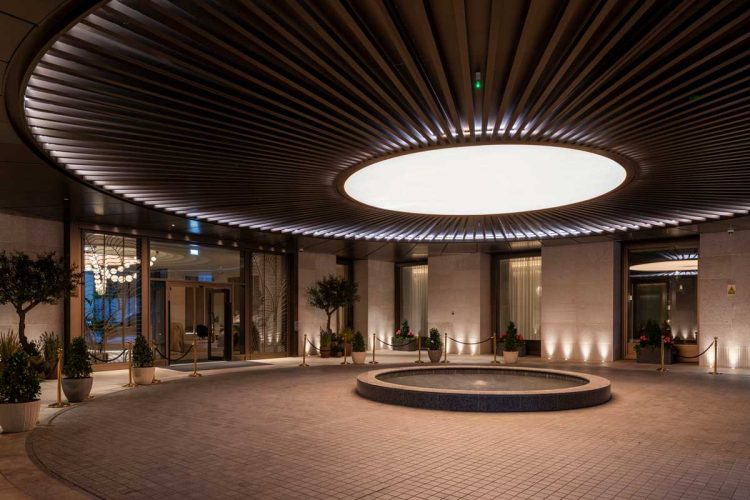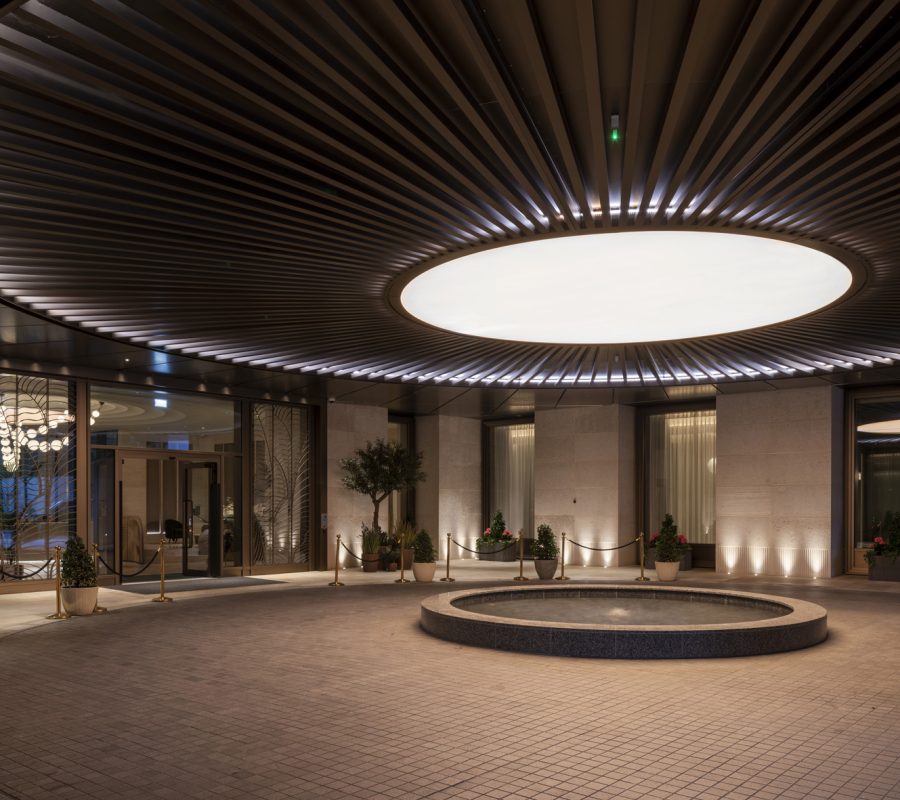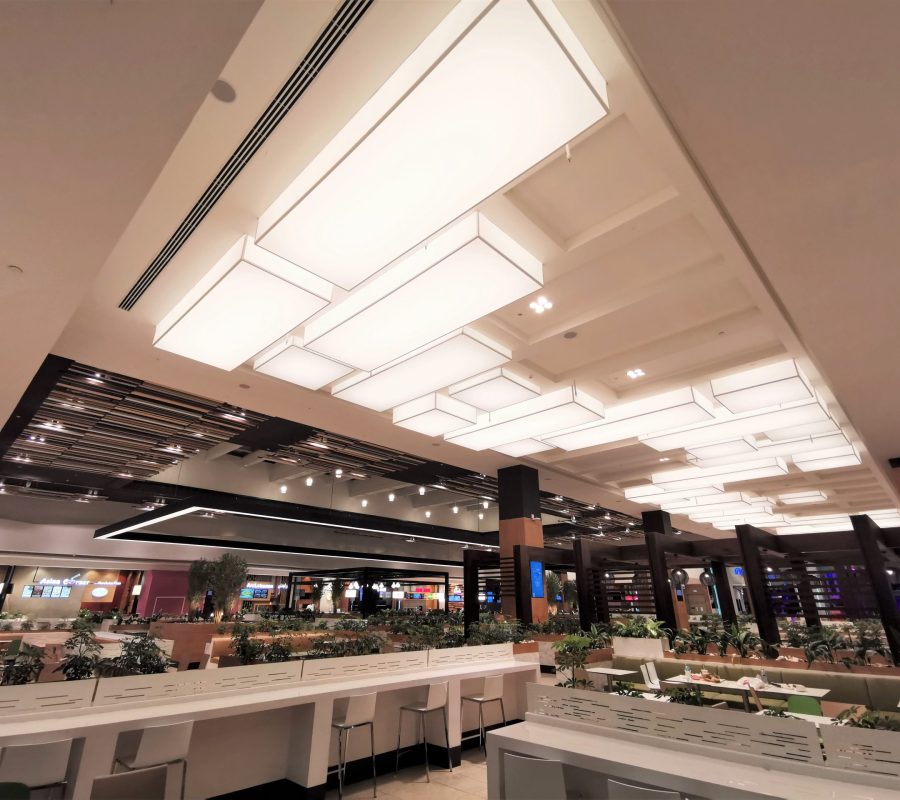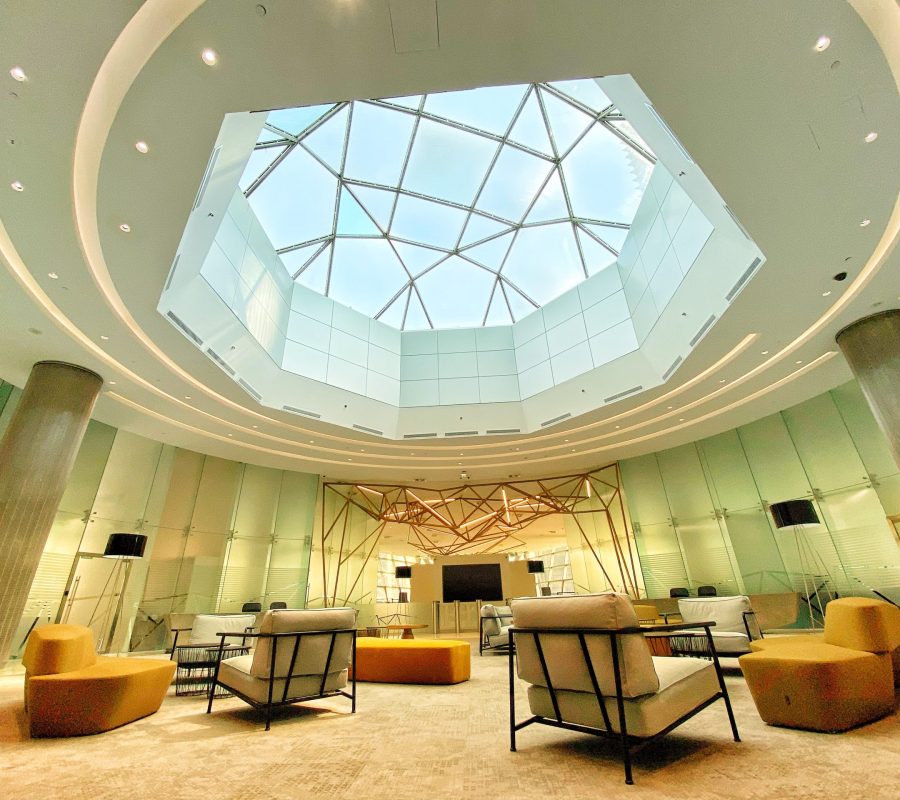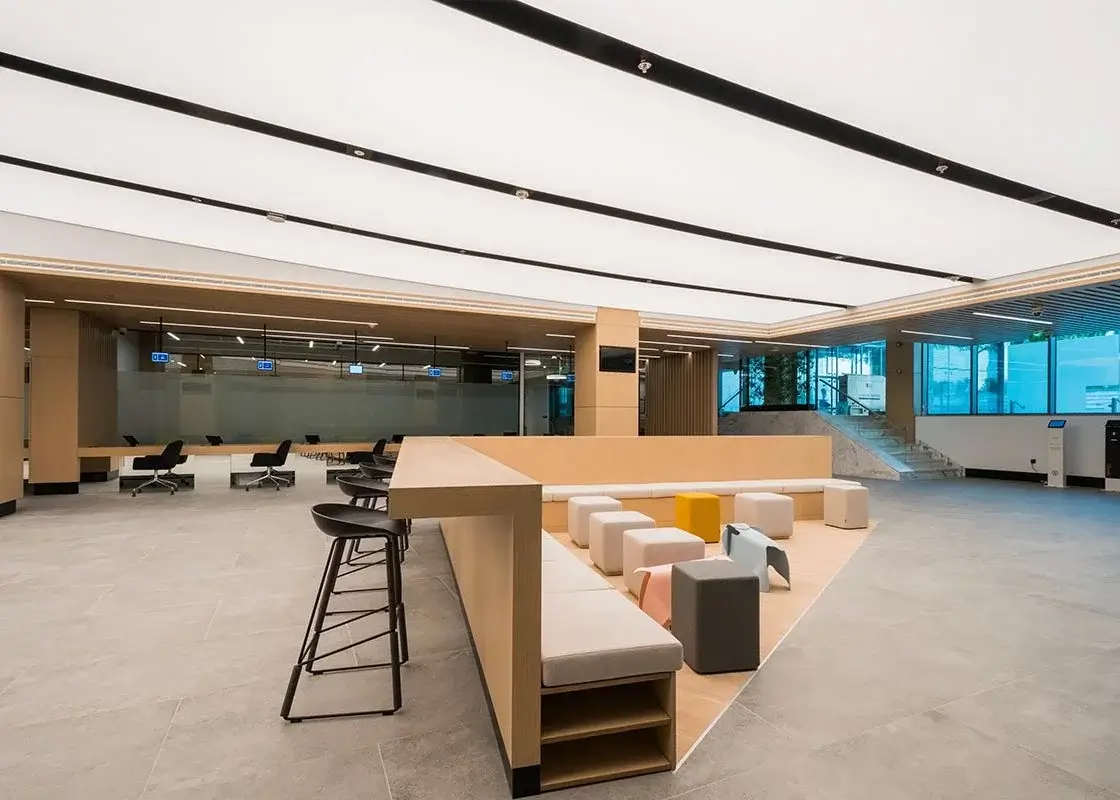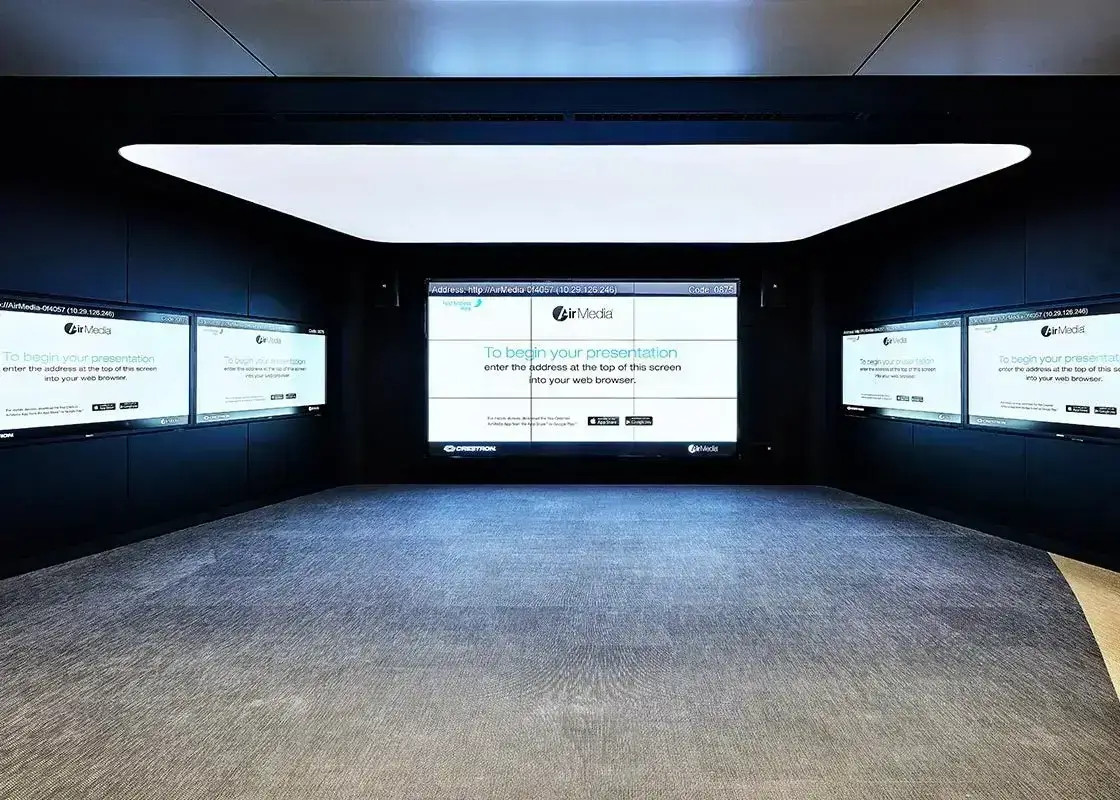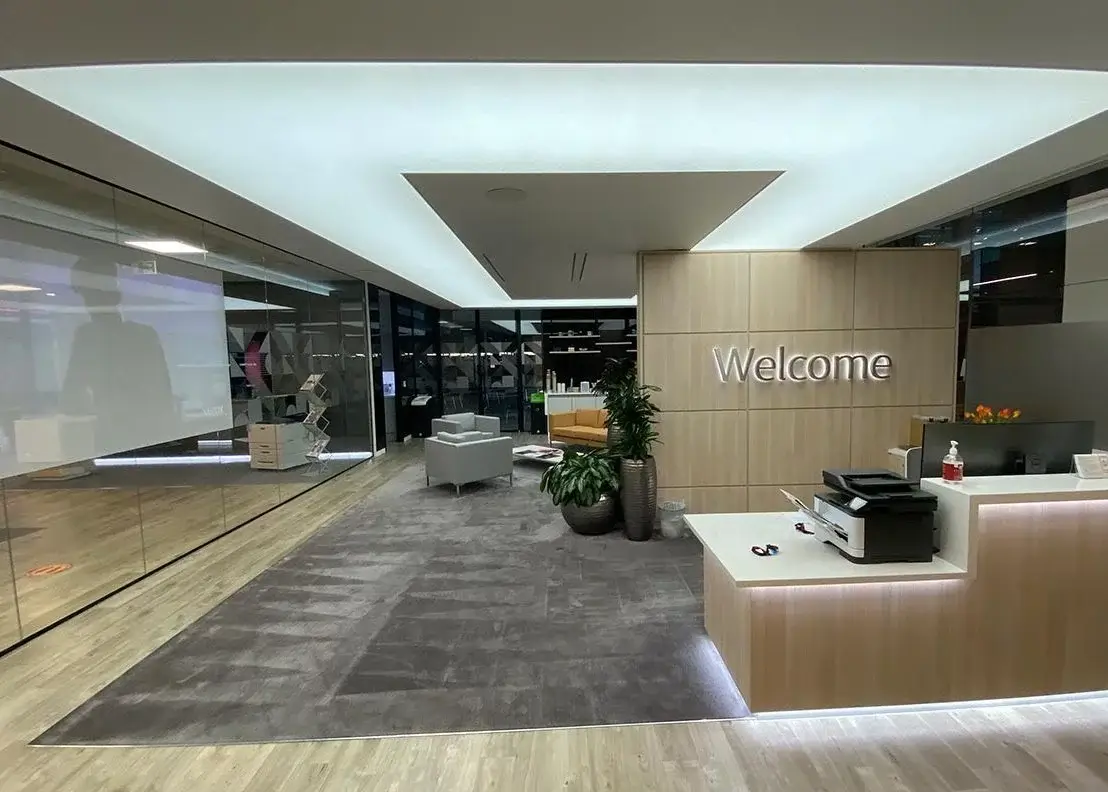THE PROS AND CONS OF STRETCH CEILINGS – TRANSPARENCY MATTERS AT NGA
At NGA, we believe in a collaborative and transparent dialogue with our clients-particularly with creative professionals who seek inspiring and versatile design solutions. We understand the importance of exploring every aspect of a product-its potential and its limitations-to empower you to make informed, confident decisions.
Stretch ceilings are incredibly innovative and has grown to be one of the most popular choices for people seeking their way out of traditional interior solutions. Be it for acoustical effect enhancement, a dramatic light display, or a bold architectural statement, stretch ceilings are fully positioned to take your creation up a notch.
Like with any other design element, however, their advantages are to be weighed with the challenges they come with. Being aware of each allows you to tap into its complete potential and apply the modern solution seamlessly in your work.
PROS OF STRETCH CEILINGS
Aesthetic Versatility
Stretch ceilings offer endless design possibilities with a variety of colours, textures, and finishes. From bespoke printed images to dynamic lighting effects, they empower architects and designers to craft unique spaces. Perfect for residential or commercial use, they ensure every design achieves its intended impact.
Durability
Stretch ceilings are resistant to mould, mildew, and moisture; hence, they are ideal for humid spaces such as pools, kitchens or bathrooms. They resist minor impacts without cracking, which ensures a long-lasting, flawless appearance. This durability means fewer replacements and consistent design continuity.
Low Maintenance
Minimal upkeep keeps stretch ceilings looking fresh—a quick wipe with a soft cloth is all that’s needed. This low-maintenance quality saves time and effort, making them an appealing choice for busy homes or high-traffic spaces.
Quick and Clean Installation
Stretch ceilings are installed quickly and without mess, requiring minimal preparation and no extensive cleanup. Their efficiency suits projects with tight timelines and spaces that need to stay functional during renovations.
Moisture Resistance
Highly resistant to moisture, stretch ceilings won’t sag or stain, even in humid areas like bathrooms or spas. Their resilience ensures designs remain visually stunning and structurally sound in challenging environments.
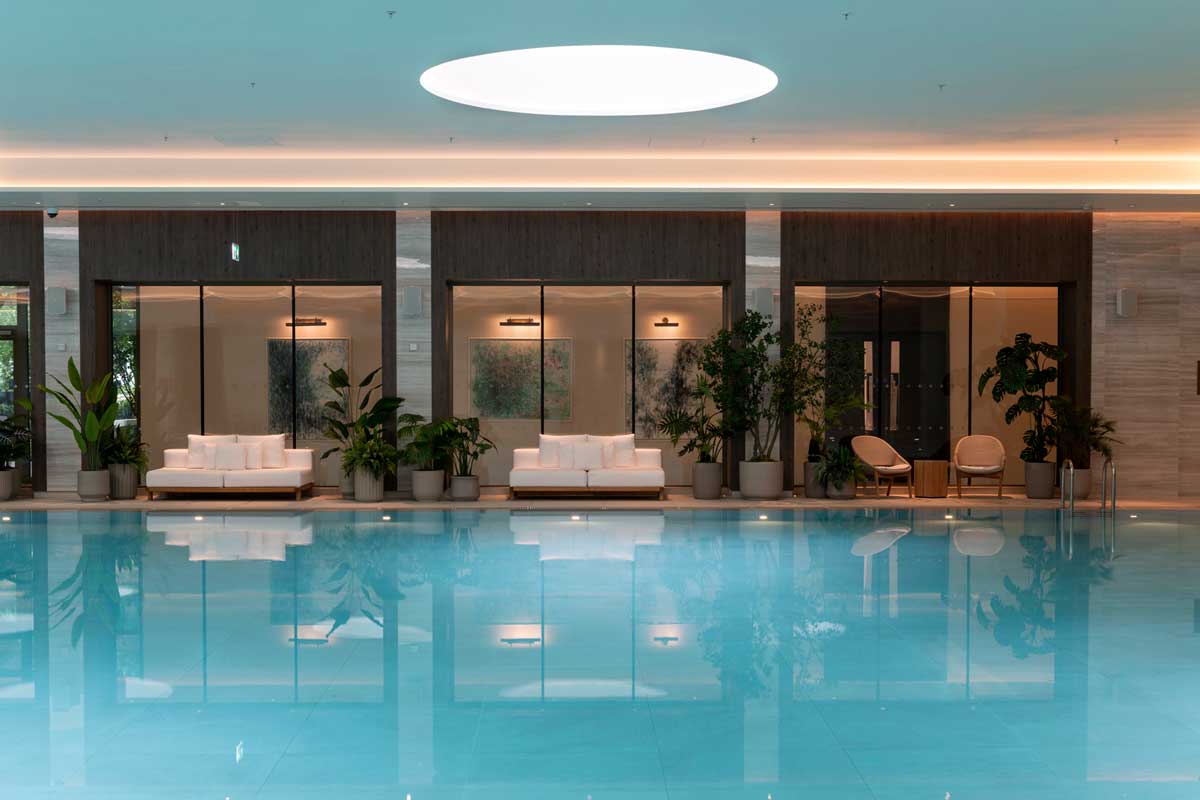
CONS OF STRETCH CEILINGS
Initial Cost
Stretch ceilings have a higher initial cost investment than the more conventional alternatives, especially in cases when rear illumination is provided for homogeneous lighting without visible luminescent sources. But in a long-term perspective, outstanding durability, low maintenance, and probable increasing of property value will definitely pay for themselves in owners’ eyes when designers need something balancing between function and aesthetics. By considering the value they will bring to a project more broadly, you can make the case for their higher upfront cost as part of a superior design solution.
Puncture Susceptibility
While resistant to most forms of damage, stretch ceilings are susceptible to punctures by sharp objects. Fortunately, the real cost is in the initial installation, such as tracking and lighting systems, rather than the actual stretch fabric. In cases of any damage, the material itself is easy and affordable to replace. This way, setbacks are easily put right, and the design can remain flawless without great disruption or cost.
Limited Flexibility After Installation
Once installed, modifying stretch ceilings—such as adding new light fixtures or vents—can be challenging. To avoid complications, careful planning during the design phase is essential. By anticipating future needs and incorporating them into the initial layout, you can ensure that the ceiling meets long-term functionality requirements without necessitating costly post-installation changes.
Temperature Sensitivity
The stretch ceiling is sensitive to strong temperature changes: it can turn brittle in very cold temperatures and lose tension in excessively hot temperatures. Therefore, the installation of a stretch ceiling is best in premises where there is stable temperature control. This way, you regulate the climate correctly and manage to keep the ceiling intact while it continues to beautify the space, both in aesthetics and functionality.
With thoughtful planning and proper care, these considerations may easily be managed, as well as allowing stretch ceilings to provide unparalleled design flexibility and sophistication.
At NGA, we’re committed to helping our clients make informed decisions. By understanding both the pros and cons of stretch ceilings, you can decide whether this solution is the right fit for your space. If you have any questions or need further guidance, our team is always here to assist you.
